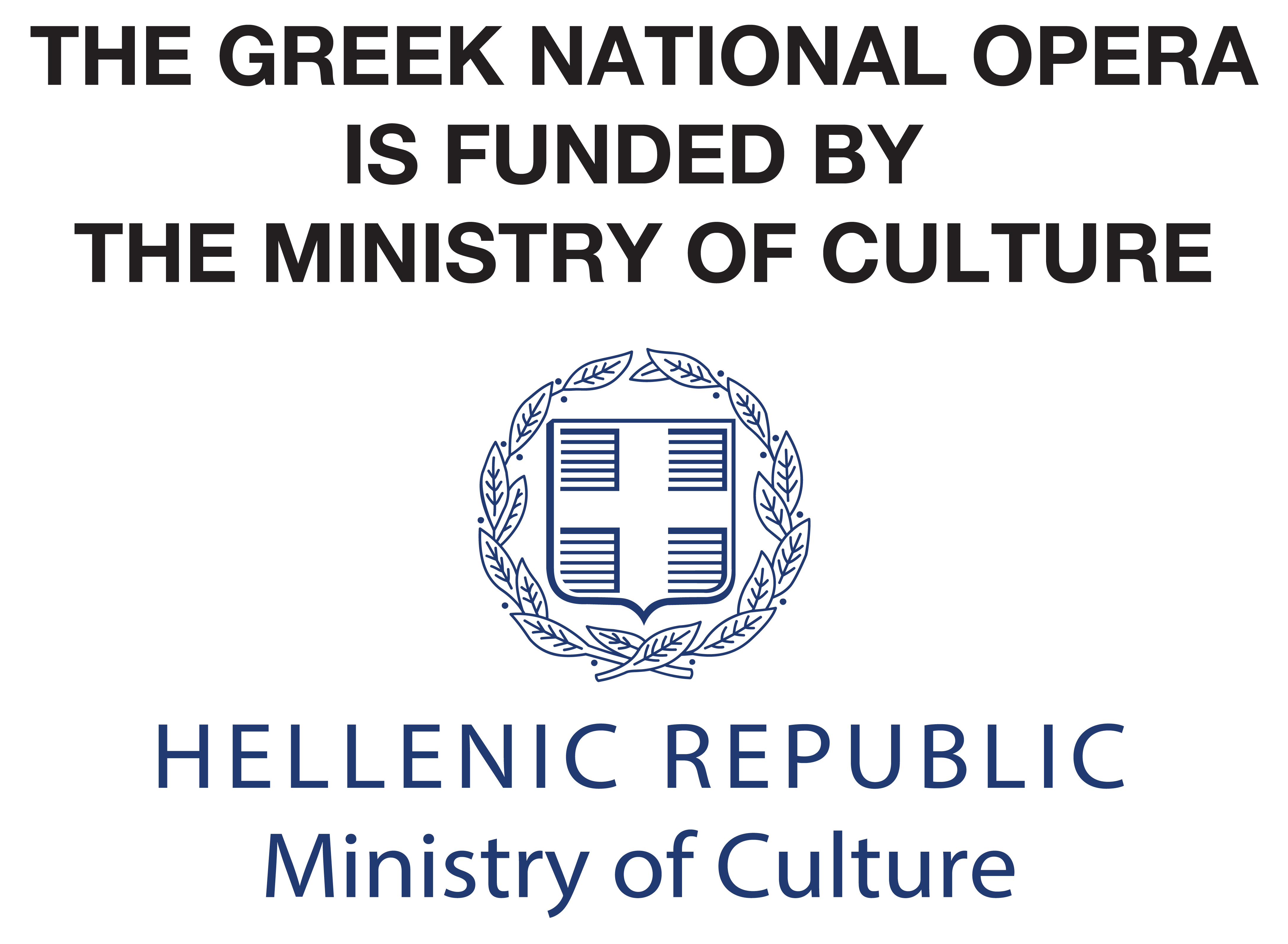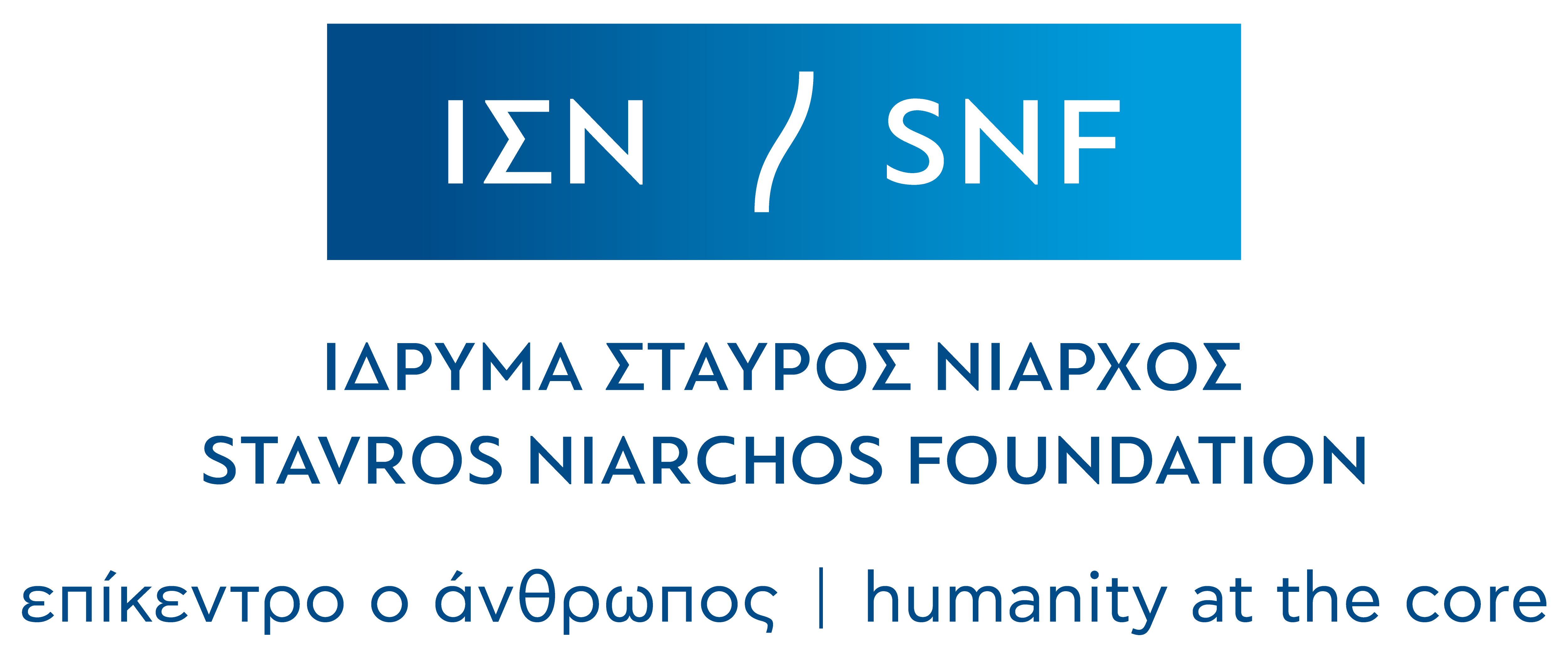Contact
ADDRESS
STAVROS NIARCHOS FOUNDATION
CULTURAL CENTER
364 Syggrou Avenue, Kallithea
TEL.
Box Office:
+30 213 0885700
Box Office email:
boxoffice@nationalopera.gr
Daily 09.00-21.00
info@nationalopera.gr
Register to our Newsletter

Choreography revival, adaptation: Verónica Villar, Elena Iglesias, based on Marius Petipa’s original choreography (according to Jean Coralli and Jules Perrot)
Conductor: José Salazar
Sets, costumes: Dido Gogkou
Lighting: Eleftheria Deko
Giselle
Elisabeth Tonev (19, 21 Dec.) / Ksenia Shevtsova (24 Dec.) / Maia Makhateli (26, 28, 30 Dec.) / Ksenia Ovsyanick (31 Dec. / 2, 3 Jan.)
Count Albrecht
Julian MacKay (19, 21, 24 Dec.) / Young Gyu Choi (26, 28, 30 Dec.) / Constantine Allen (31 Dec. / 2, 3 Jan.)
Hilarion
Danilo Zeka / Vangelis Bikos / Yorgos Hatzopoulos
Wilfred
Yannis Benetos / Yannis Gantsios
Berthe
Emilia Gaspari / Mania Karavassili
The Duke of Courland
Igor Siadzko / Florian-Michalis Pappas
Bathilde
Christina Makridou / Popi Sakellaropoulou
Peasant pas de deux
Angelos Antoniou - Marita Nikolitsa
Manex Alberdi - Cecilia Hatziemmanouil
Stefano Pietragalla - Areti Noti
Yorgos Hatzopoulos - Carla Ruiz Garcia
6 Gisellse's friends
Anna Frangou, Olga Markari, Marita Nikolitsa / Cecilia Hatziemmanouil, Areti Noti, Eleftheria Stamou, Zoi Schoinoplokaki
Peasants
Maria Elpida Vasilopoulou, Maria Pichler-Gaspari, Georgia Dimou, Magda Koukou-Ferra, Nefeli Dali, Despina Chrysostomou
Manex Alberdi, Angelos Antoniou, Yannis Gantsios / Sotiris Pierrakos, Yannis Mitrakis, Daniele Pecorari, Stefano Pietragalla / Elton Dimrochi, Yorgos Hatzopoulos / Giorgos Tsigos
Hunter Couples
Blendi Latifi - Vicky Tsiroyanni, Esmeraldo Bitro - Vicky Bourcha, Hector Bollano - Mania Karavassili / Lydia Kapouni, Nikos Moschis - Cleopatra Aneroussou
Grand Parents Villagers
Florian-Michalis Pappas, Dimitris Ferras, Despina Bisbiki, Ilir Sipri, Evi Karpouzi
Kids
Nafsika Mio Vratsanou, Nefeli Kollia, Faidra Kourli, Alexandra Konstantinidi, Margarita Linchour, Anna Nathanail, Aikaterini Dousikou, Theseas Miligos Kontarinis, Athanasios Pappas, Melina Spiliopoulou, Alexandra Tartara, Sofia Tsirogianni, Despoina Christopoulou
Myrtha
Eleana Andreoudi / Olga Markari
2 Willis
Moyna
Anna Frangou, Carla Ruiz Garcia, Eleftheria Stamou
Zulma
Carla Ruiz Garcia, Areti Noti, Cecilia Hatziemmanouil
Willis
Anna Frangou, Maria Elpida Vasilopoulou, Maria Pichler-Gaspari, Katerina Devetzi, Georgia Dimou, Lydia Kapouni, Magda Koukou-Ferra, Olga Markari / Sissi Tsagada, Fotini Mouchtari, Sofia Nikolaou, Marita Nikolitsa, Nefeli Dali, Areti Noti / Myrsini Petroutsou, Alexandra Spanou, Eleftheria Stamou / Eleni Fotou, Zoi Schoinoplokaki, Cecilia Hatziemmanouil / Myrsini Petroutsou, Despina Chrysostomou
With students from the Professional Dance School of the Greek National Opera
Ticket prices: €15, €20, €30, €35, €50, €55, €60, €80
Students, children: €12
Limited visibility seats: €10
Ballet • New production
GNO Stavros Niarchos Hall – SNFCC
Starts at: 19.30 (Sunday, 24 & 31/12: 18.30) | 

Lead Donor of the GNO

Ballet sponsor

The Greek National Opera Ballet presents a new, classical production of Giselle, the Romantic ballet set to Adolphe Adam’s enchanting music. Marius Petipa’s timeless choreography is brought to life by distinguished choreographers Verónica Villar and Elena Iglesias. The production begins on 19 December and will run for nine unique performances in the Stavros Niarchos Hall of the GNO at the SNFCC, conducted by José Salazar and starring top-tier international protagonists in the leading roles.
Giselle is a cornerstone of the ballet repertoire. The title role has been described as “the Hamlet of ballet”, serving both as a challenge and as a way for classical ballet female dancers to establish themselves. From its world premiere at the Paris Opéra in 1841 to this day, Giselle continues to captivate and move audiences across the globe. Petipa’s classic choreography preserves its freshness intact, exploring human weakness, betrayal, and the mourning that can only be overcome through selfless love—a love that transcends death by protecting and nurturing life itself.
Giselle’s story begins to unfold when Count Albrecht introduces himself to her as an ordinary villager, and she innocently falls in love with him. When his true identity is revealed, and Giselle discovers that he is engaged to another woman, she loses her sanity and takes her own life. Deep in the woods, under the light of a full moon, the souls of girls betrayed by their lovers, known as the Wilis, return on their wedding night to seek revenge, transformed into elves. Every man they encounter must dance with them nonstop until he collapses. Repentant Albrecht also gets enticed by their deadly calling, but Giselle intervenes in his all-night dance and supports him until the break of dawn, when the elves’ power wanes. Giselle forgives him and goes back to her eternal life as an elf, leaving him devastated.
Verónica Villar and Elena Iglesias bring to life the famous choreography of Marius Petipa, who first presented it with the Imperial Ballet of St Petersburg in 1884, creating a captivating dialogue that blends classical style, emotion, and storytelling. Petipa based his choreography on that of the Frenchman of Italian descent, Jean Coralli. The first sections of that choreography for the principal dancer had been crafted by French choreographer Jules Perrot while he was involved in a romantic relationship with the lead dancer, Carlotta Grisi.
Verónica Villar was a soloist at the Bilbao Youth Ballet, and a principal dancer with the Basque Country Ballet. She distinguished herself in the dual role of Odette / Odile in Swan Lake under Maya Plisetskaya’s guidance. Since 2013, she has been a ballet teacher and co-director of rehearsals at the State Theatre of Karlsruhe. Since 2019, she has served as director of the State Theatres of Eisenach and Meiningen. She teaches worldwide, from the Royal Ballet School in Antwerp to Japan, and collaborates with prominent international choreographers.
Internationally awarded Elena Iglesias graduated from the Royal Conservatory of Dance in Madrid. She currently teaches at the Conservatorio Superior de Danza “María de Ávila” – the State Professional Dance School in Riba-roja de Túria, Valencia. She has worked as a ballet teacher and répétiteur at the Zaragoza Ballet. Since 2013, she has been the director and continues to serve as a dance teacher and choreographer at the Palatinate Theatre in Kaiserslautern, Germany.
The GNO Orchestra will be led by the talented emerging conductor José Salazar, who stood out as a scholar of the “Gustavo Dudamel” programme with the Los Angeles Philharmonic. As the artistic director and conductor of El Sistema Greece (2018–2023), he curated and conducted concerts at major music venues in Greece. He has worked extensively with the Royal Ballet, participating in the London Royal Opera House’s “Jette Parker” Artists Programme. During his debut last year in the USA and Venezuela, he conducted the YOLA Festival Symphonic Orchestra at the Walt Disney Concert Hall and the Youth Orchestra “Simon Bolivar”, respectively. Giselle marks his first collaboration with the Greek National Opera and Ballet.
Dido Gogkou, responsible for the production’s sets and costumes, is a set and costume designer and a visual artist with a strong presence in theatre. She collaborates with both Greek and international companies, including Münchner Kammerspiele, Grips Theatre in Berlin, the National Theatre of Northern Greece, Fondazione Teatro Due in Parma, Athens Epidaurus Festival, the National Theatre of Greece, and Rimini Protokoll, among others. As she notes, “Giselle’s sets are a modern visual approach, inspired by the means and techniques of the 16th century, Renaissance, and contemporary visual art applications. The costumes offer a contemporary take on 16th- and 17th-century costumes, showcasing the textures, lines, and designs of the past through today’s lens.”
The show’s lighting has been designed by award-winning and internationally acclaimed lighting designer Eleftheria Deko. As a professional lighting designer and academic, Eleftheria Deko is regarded as a pioneer in the art of lighting in Greece. She has created lighting designs for approximately five hundred works, including theatre, music, dance, visual installations, and numerous architectural lighting projects. A milestone among the multiple awards and honours she has received worldwide is the Emmy award she earned for the lighting design of the 2004 Olympic Games Opening Ceremony in Athens. She was the first to introduce lighting design education at the Greek university, and she has taught at New York University, Aristotle University of Thessaloniki, and the Hellenic Open University.
Alongside the exceptional Principal Dancers, Soloists, Demi-Soloists, and the Corps de ballet of the GNO, the production will also feature star dancers from the international ballet firmament.
Julian MacKay and Elisabeth Tonev will portray the leading couple on 19 and 21 December, while on 24 December, the role of Giselle will be performed by Ksenia Shevtsova.
Multi-award-winning Julian MacKay is a Principal Dancer with the Bavarian State Ballet. Throughout his remarkable career, he has collaborated and performed with the Russian State Ballet, the Royal Ballet in London, the Mikhailovsky Theatre in St Petersburg, and the San Francisco Ballet. Elisabeth Tonev is also a Principal Dancer with the Bavarian State Ballet, honoured with the Heinz-Bosl Foundation Konstanze-Vernon-Award. She has performed leading roles in both the classical and modern repertoires in works by renowned choreographers, including Ratmansky, Forsythe, Van Manen, Dawson, and Balanchine. Ksenia Shevtsova is a Principal Dancer with the Stanislavsky Theatre and the Bavarian State Ballet. She has been honoured as Best Bolshoi Ballet Dancer (2018), and has also received the Soul of Dance award (2019). She has performed outstanding roles in the classical repertoire and has collaborated with important choreographers such as Petit, Possokhov, Kylián, Duato, and Ratmansky.
On 26, 28 and 30 December, the GNO audience will have the chance to enjoy the distinguished Georgian dancer Maia Makhateli in the title role of Giselle, marking her return to the GNO after her exceptional performance in Don Quixote in 2022. Alongside her, performing as Albrecht will be Young Gyu Choi from the Dutch National Ballet. Maia Makhateli has been a Principal Dancer with the Dutch National Ballet since 2009. In 2020, she was named “Dancer of the Year” by Dance Europe. She has performed at major theatres, galas, and festivals worldwide, gaining international acclaim. Young Gyu Choi, a Principal Dancer with the Dutch National Ballet, has received global recognition for his dynamic stage presence and sophisticated artistic expression.
The last three performances on 31 December, 2 and 3 January, will feature Ksenia Ovsyanick, who returns to the GNO after her exceptional performance as Kitri in Don Quixote, alongside a distinguished dancer from the Dutch National Ballet, Constantine Allen.
Ksenia Ovsyanick, an internationally sought-after British-Belarusian dancer, is a Principal Dancer with the Berlin State Ballet and the Polish National Ballet. She took her first steps with the English National Ballet, and throughout her hitherto highly successful career, she has performed roles in both the classical and modern repertoires and has collaborated with leading international choreographers. Constantine Allen is an American of Greek descent and a Principal Dancer with the Dutch National Ballet. Among the numerous awards and distinctions he has received, winning the Grand Prix at the Tanzolymp competition in Berlin (2011) established his international reputation. He has performed as a Principal Dancer with the Stuttgart Ballet, as well as with Les Grands Ballets Canadiens.
The role of Hilarion will be shared by GNO Ballet Principal Dancers Danilo Zeka and Vangelis Bikos. Myrtha will be portrayed by the GNO Principal Dancer Eleana Andreoudi, and Olga Markari. The cast also features the GNO Ballet dancers Emilia Gaspari, Yannis Benetos, Yannis Gantsios, Igor Siadzko, Florian Michalis-Pappas, Christina Makridou, Popi Sakellaropoulou, Anna Frangou, Elena Kekkou, Marta Rivero de Miranda, Eleftheria Stamou, Marita Nikolitsa, Cecilia Hatziemmanouil, Areti Noti, and Zoi Schinoplokaki.
With the Orchestra, Principal Dancers, Soloists, Demi-Soloists, the Corps de ballet, as well as students from the Professional Dance School of the Greek National Opera.
Giselle at a glance
The ballet / Giselle, ou Les Wilis, as is the work’s full title, is a ballet in two acts. Théophile Gautier and Jules-Henri Vernoy de Saint-Georges were inspired by a story by Heinrich Heine, based on a Slavic myth. Initially, the ballet had little in common with what we know today. There were more pantomime scenes, since pointe as a technique was still in its early days. Gradually, an increasing number of pantomime scenes were replaced by dance parts, a fact that also affected the work’s music, since certain sections were shortened, others cut, or moved. Together with La Sylphide (1832), Giselle was one of the first ballets in which the dancer appeared in a dress that covered her body only up to her calves.
The score / The music was composed by Adolphe Adam (1803–1856). Although the French composer wrote 39 operas, including the once-popular Le Postillon de Lonjumeau (1836), Adam is primarily known for his music for Giselle. Petipa commissioned the Austrian composer Léon Minkus (1826–1917) to compose a pas de deux for Giselle and Albrecht for his revised version of the ballet; this was incorporated into Act I. This pas de deux, however, was not included in Sergei Diaghilev’s Ballets Russes production in Paris in 1910, which is the basis for most modern productions. Consequently, it has been omitted from modern performances. Minkus also altered Adam’s orchestration. His version is still heard today, particularly in Russian productions of the work. In this version, the ballet is presented with additional music by Friedrich Burgmüller, as well as the finale as composed by Boris Asafyev.
The story / The story recounts the hapless love affair between the peasant girl Giselle and Count Albrecht, who presents himself to her as a peasant. When Giselle discovers his true identity and finds out that he is betrothed to another, she loses her sanity and kills herself. At night in the forest, the Wilis—spirits of young women who have been betrayed by their loved ones on the eve of their wedding day and have transformed into elves—lure every passer-by, forcing him to dance with them until he collapses. When the remorseful Albrecht arrives at Giselle’s tomb, the Wilis entice him to dance with them, but Giselle intervenes, helping him to stay alive until dawn, when the Wilis lose their power. After forgiving him, she returns to her grave.
Premieres / Giselle was first staged by the Paris Opéra Ballet—then called Ballet du Théâtre de l’Académie Royale de Musique—on 28 June 1841. The leading roles were performed by Carlotta Grisi and Lucien Petipa. The last time Giselle was performed in Western countries was in 1867. It made its comeback in 1910, when it was staged by Sergei Diaghilev’s Ballets Russes in Paris with Tamara Karsavina in the title role. Initially, only Act II of Giselle was included in the Greek National Opera Ballet repertoire in 1982. The full-length ballet was staged on 10 February 1983 with Katerina Dima as Giselle and Angelos Hadjis as Albrecht.
STAVROS NIARCHOS FOUNDATION
CULTURAL CENTER
364 Syggrou Avenue, Kallithea
Box Office:
+30 213 0885700
Box Office email:
boxoffice@nationalopera.gr
Daily 09.00-21.00
info@nationalopera.gr